#vendéan insurrection
Photo
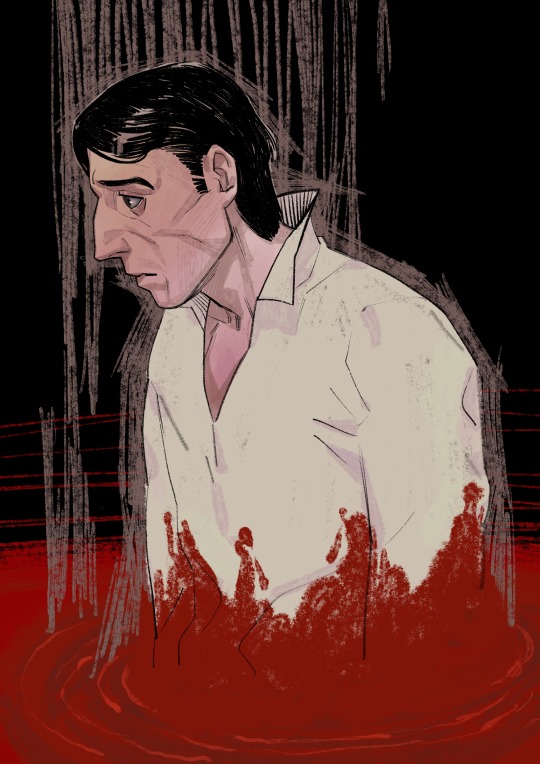
“Drown him”
29 notes
·
View notes
Text

Henri de la Rochejaquelein by Pierre-Narcisse Guérin
#henri de la rochejaquelein#art#pierre narcisse guérin#portrait#war in the vendée#vendée#royalist#royalists#french revolutionary wars#french revolution#france#french#henri du vergier#vendéan#insurrection#rebellion#catholic#royal#history#europe#european#aristocratic#nobility#aristocrat#nobleman#kingdom of france#general#monarchy#army#vendéans
105 notes
·
View notes
Text
"...followed her father, disguised herself as a man, and fought as a Royalist cavalier in the troops of Charles Melchior Artus de Bonchamps during the Vendéan insurrection against the French Revolution (in 1793) and took part in all battles of the war.
(...)
On one of her own experiences, Bordereau wrote: 'Arriving near the Loire, I destroyed five of my enemies, and finishing off the day, I broke my sword on the head of the last one... Seeing only one horseman near me, I doubled back to our army. I alone, killed twenty-one that day. I'm not the one who counted them, but those who followed me, and if they hadn't said so, I wouldn't have spoken about it myself.'"
2 notes
·
View notes
Text
Renée Bordereau - Female Royalist Cavalier Of The Vendéan Insurrection

"Renée Bordereau, whose father was butchered before her eyes, and who lost forty-two relatives in the civil war of La Vendee; during the course of six years fought in more than two hundred battles, on foot and on horseback, with the most determined intrepidity. In one battle she killed twenty-one of the enemy. She liberated fifty priests at one time and eight hundred at another, all of whom would have been executed. A price of 40,000 francs was set on her head. She was thrown into prison for a crime for which she could only prove her innocence by a discovery of her sex, where she remained five years, until the accession of Louis Eighteenth to the throne of France."
She was born to peasant family in the month of June in 1770 in a village near Angiers France. She may have done some smuggling during her youth, carrying illegal salt between Maine and Brittany.
Her father was part of the riots of the Revolution and as result, was later executed by revolutionaries in December 1793.
At her first battle Renée Bordereau supposedly killed seventeen Bleues “and was present at so many engagements … Vendeans came to look upon her as invulnerable.” She was also so zealous in her support of the Royalists and their cause that when one of her uncles joined the Republicans, she beheaded him. In another battle she was equally fierce, reputedly killing “four Bleues at St. Lambert with her own hands.” A unit led by her threw six hundred Republican soldiers from the heights of Roche-de-Mûrs in the commune of Mûrs-Erigné, south of the town of Angers, Pays de la Loire, into the Louet River below.
Her effectiveness as a soldier is attested by independent sources, including Madame de La Rochejaquelein, who reported "She was of ordinary height and very ugly. One day at Cholet, they pointed her out to me. 'See that soldier who has sleeves of a color different from his coat. That's a girl who fights like a lion.'... Her unbelievable courage was celebrated throughout the whole army."
“Always on horseback, in the very advance of her company, soliciting to be preferred to the most dangerous posts, she never quitted the field of battle, till compelled by wounds, or the toils of the day. Her only ambition, her only passion, were the triumph of Religion, and the re-establishment of her lawful King.”
-Staffordshire Advertiser
On one of her own experiences, Bordereau wrote: "Arriving near the Loire, I destroyed five of my enemies, and finishing off the day, I broke my sword on the head of the last one... Seeing only one horseman near me, I doubled back to our army. I alone, killed twenty-one that day. I'm not the one who counted them, but those who followed me, and if they hadn't said so, I wouldn't have spoken about it myself."

Her fame continued until 1824. That was the year she died in her native village at the age of fifty-four. Madame de la Rochejaquelein, wife to Louis Vergier of Rochejaquelein (the younger brother of Henri, who was the youngest general of the Royalists during the Vendean revolt), sent a letter to Madame de Bouëre announcing Renée Bordereau’s sorrowful passing:
“This letter, which bears signs of the Marquise’s tears, is a flower placed on the grave of the obscure and valiant peasant who had testified her fidelity to God and to her King by twenty years of combats, sufferings, and imprisonment.”
#catholic#catholic history#the french revolution#renee bordereau#christian#history#women in history#french history#vendéan insurrection#war of the vendée
102 notes
·
View notes
Text

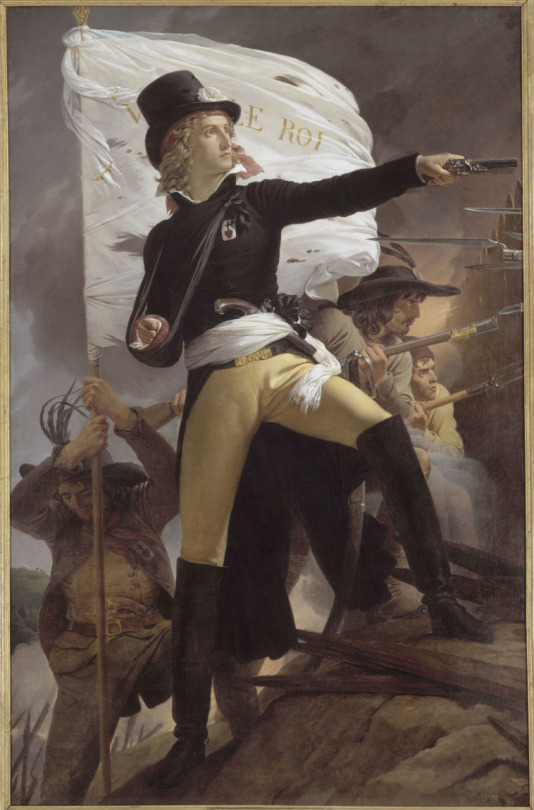




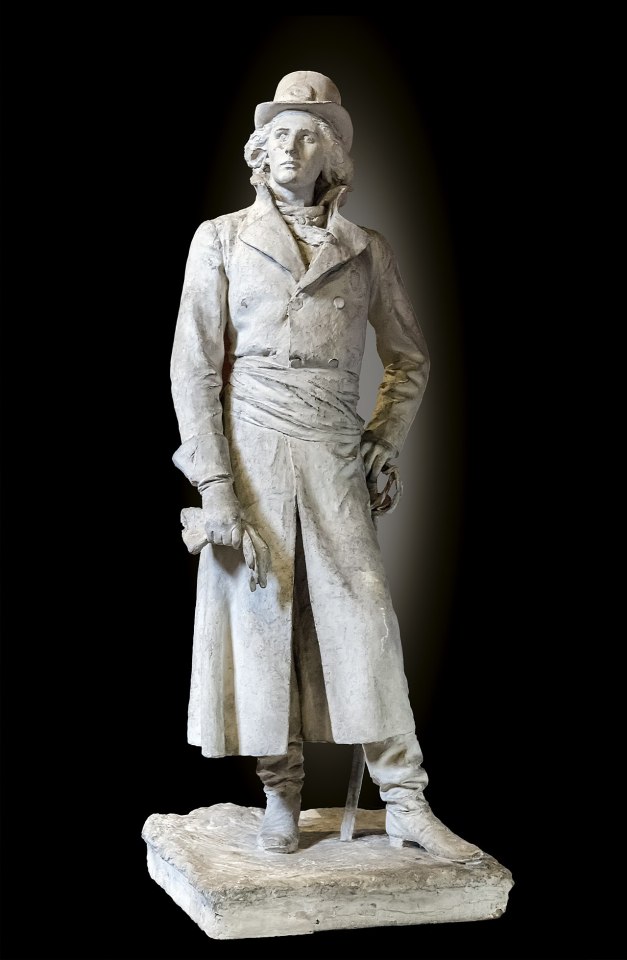
Henri de la Rochejaquelein (1772-1794).
.
He was the youngest general of the Royalist Vendéan insurrection during the French Revolution. A commander-in-chief of the Catholic and Royal Army at the age of 21, he is regarded as one of the most courageous officers in French military history.
.
In March 1792 he became a member of the Constitutional Guard, charged with protecting the King of France. He fought for the first time defending the Tuileries Palace on the 10 August 1792 attack, as an officer of the Constitutional Guard of King Louis XVI.
.
Returning to his home province, he refused to comply with the levée en masse called by the outbreak of the French Revolutionary Wars.
Resistance to conscription soon escalated into a full rebellion, known as the War in the Vendée. Soon after, De la Rochejaquelein and his compatriots started fighting the troops of the French Republic.
.
Leading a few thousand Vendéan peasants, De la Rochejaquelein gained his first victory over the French Revolutionary Army on 13 April 1793, and took part in several battles. He was famous for his contempt for danger, wearing three red handkerchiefs; on his head, around his neck and at his waist to defy the Republican gunners.
.
In August, after the Battle of Luçon, he regrouped the Vendéan army, which was on the verge of being disbanded, and won the Battle of Chantonnay on 5 September. On 13 September the thumb of his right hand was shattered by a bullet during an engagement with Republicans at Martigné-Briand but he continued to fire at his opponents. He had to retreat across the Loire after being beaten in the Battle of Cholet, on 17 October.
.
On 20 October, De la Rochejaquelein was unanimously elected as commander-in-chief of the Catholic and Royal Army. However, his bravery did not compensate for his lack of experience and strategic skills.
.
In December, he was defeated him in Le Mans and in Savenay. After this decisive rout, the Catholic and Royal Army was no longer a fighting force; De la Rochejacquelein had to take to the woods disguised as a peasant. He managed to save the remains of his army by crossing the Loire, and left under the criticism of his fellow companions.
.
While trying to pursue a guerrilla war against the Republicans, he was killed by a Republican soldier. On a reconnaissance mission he had spotted two Republican soldiers who pretended to surrender to him, but then shot him in the forehead.
[Submission]
#Henri de la Rochejaquelein#french history#france#french revolution#18th century#1700s#late 1700s#history crush#historical hottie#history#history hottie#historical crush#history lover#historical figure#history nerd#historical babes#historical
86 notes
·
View notes
Photo

Jacques Cathelineau (5 January 1759 – 14 July 1793)
Generalissimo of the Catholic and Royal Army, was a French Vendéan insurrection leader during the Revolution. He was known among his followers as the Saint of Anjou.
31 notes
·
View notes
Photo

Henri de Rochejaquelein was the youngest general (20 years old) of the Royalist Vendéan insurrection during the French Revolution.
At Fontenay he was famous for his contempt for danger, wearing three red handkerchiefs - on his head, around his neck and at his waist to defy the Republican gunners. [...] In August, after the Battle of Luçon, he regrouped the Vendéan army, which was on the verge of being disbanded, and won the Battle of Chantonnay on 5 September. On 13 September the thumb of his right hand was shattered by a bullet during an engagement with Republicans at Martigné-Briand but he continued to fire at his opponents. His famous portrait by Pierre Narcisse Guérin shows him with his right arm in a sling, shooting with his left hand. (Wikipedia)
39 notes
·
View notes
Photo

Jacques Cathelineau (1759-1793), généralissime vendéen
Anne-Louis Girodet · 1824
Jacques Cathelineau (5 January 1759 – 14 July 1793) was a French Vendéan insurrection leader during the French Revolution. He was known among his followers as the Saint of Anjou.He was a well known peddler in Anjou. When the Kingdom of France was abolished and the French First Republic was established, the revolutionaries committed atrocities against the civilians of the Vendee during the Reign of Terror. Cathelineau rallied an army of peasants loyal to the monarchy and the Church and waged an uprising against the revolutionaries, capturing several villages and castles, leading more volunteers to follow him.As the War in the Vendée grew in success, Cathelineau joined forces with other counterrevolutionary leaders and was made generalissimoof the Catholic and Royal Army. He inspired his troops by fighting alongside them on the front lines, which proved to be his downfall. In the summer of 1793, while he and his men were storming the city of Nantes, Cathelineau was shot down by a sniper and died soon afterwards. Without his leadership the royalists were defeated and soon they broke up into different factions. After the Bourbon Restoration, in honor of the heroism and sacrifices of Cathelineau, his family was given noble status.
https://www.wikiart.org/en/thomas-lawrence/henry-william-paget-1st-marquess-of-anglesey-kg-1818
21 notes
·
View notes
Photo
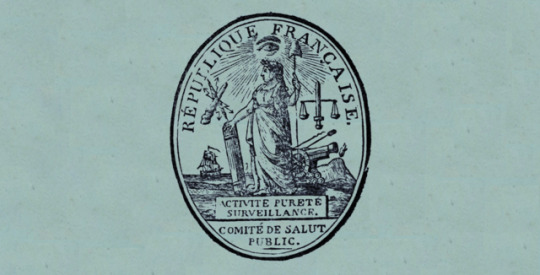
The Committee of Public Safety (F. Brunel)
The trace left in history be the most famous of the Convention's committees is profound and sometimes unexpected: it was, let us remember, the schemes of a rebellious Committee of Public Safety which presided over the instauration of the Fifth French Republic.
One must not be surprised by the late creation of the committee. While the notion of salut public was one of the founding concepts of the Revolution, the Assembly could fear that the ascendancy of such an institution would be too great, and, at the same time, that it would infringe upon the remit of the Provisional Executive Council and that it would tend towards an autonomy contrary to the principle of legislative centrality. Thus, on 1 January 1793, the Girondin deputy Kersaint only proposed the establishment of a Comité de défense générale which was to be composed of deputies chosen among the members of the seven committees (War, Marine, Colonies, Finances, Trade, Diplomatic Committee and Constitution Committee). This new committee at first gathered thrice per week, later, from 21 January onwards, every day, even two times per day, at noon and at seven o'clock in the evening. The defeat of Neerwinden and the beginning of the Vendéan insurrection justified the creation of an ephemeral Commission de salut public on 25 March 1793: the term was therefore finally adopted. On 6 April 1793, the Convention decreed, at the end of a long debate, the creation of a Comité de salut public and immediately proceeded to the election of its members by roll-call. The first nine elected members were Barère, Delmas, Bréard, Cambon, Danton, Jean de Bry (who resigned, being replaced by R. Lindet), Guyton-Morveau, Treilhard and Delacroix (d'Eure-et-Loire). They held two sessions per day (at nine o'clock in the morning and seven o'clock in the evening) in the Pavillon de Flore (renamed Pavillon de l'Egalité). On 30 May 1793, the Convention added five deputies charged with presenting the articles of the constitution, Hérault de Séchelles, Ramel, Saint-Just, Mathieu and Couthon. After the fall of the Gironde, the Committee of Public Safety was reorganised: bureaus were created and the affairs were divided into six sections. Enlarged by successive elections, it counted eighteen members on the eve of the new reorganisation of 10 July 1793. On this day, the Convention decided to re-elect nine members by roll-call: these were, elected in this order, Barère, Jeanbon Saint-André, Gasparin, Couthon, Hérault de Séchelles, Thuriot, Prieur (de la Marne), Saint-Just and Robert Lindet. On 27 July, Robespierre replaced Gasparin, who had resigned, and on 14 August, Carnot and Prieur (de la Côte d'Or) were elected. On 6 September 1793, at last, Billaud-Varenne and Collot d'Herbois made their entrance, whereas Danton and Granet refused their election. After Thuriot, in turn, resigned on 20 September, the Committee of Public Safety was the composed of twelve members, Twelve Who Ruled, to use Robert Palmer's suggestive [...] formula.
What one calls the « great Committee of Public Safety » – composed, in fact, of eleven deputies, as Hérault de Séchelles, sent on mission in Alsace, denounced in Frimaire Year II and executed in Germinal, no longer sat there – has aroused the attention of historians. Relying, sometimes uncritically, on post-Thermidorian sources (particularly the Reports of Le Cointre and of Saladin or the Defences of Barère, Billaud and Collot), historiography has erected the committee as the centrepiece of the « Jacobin dictatorship ». One has often paid particular attention to the growing number of its employees (67 in Frimaire, 418 in Prairial Year II), the sign of an undeniable « bureaucratisation », to its agents (such as Eve Demaillot, Pottofeux or the young Jullien, called Jullien de Paris) who had became an executive power independent of the Convention, and, finally, to its Bureau de police générale, whose activities, from Floréal to Thermidor Year II, had largely overflowed onto the duties of the Committee of General Security. All of this demands to be nuanced. First of all, because the law of 14 Frimaire Year II clearly defined the area of competence of the Committee of Public Safety, which was obliged to report to the Convention every month and was composed of deputies who were elected and personally responsible. The decree of 27 Germinal Year II (16 April 1794), which clarified that the supervision of public servants was confided to the Committee and which led to the creation of this bureau de surveillance administrative et de police générale, hardly modified, in this regard, the Law of 14 Frimaire (2nd section, article 2). As to the « rivalry » between the bureau and the Committee of General Security, Arne Ording has demonstrated that it was necessary to moderate it, at least until Messidor Year II, when a conflict undoubtedly broke out about the commissions populaires which had been created in Floréal.
If the Committee of Year II has aroused publications and polemics, it has also reasonably clouded the history of the post-Thermidorian Committee. It has also been accepted that the decree of 7 Fructidor Year II (24 August 1794) deprived it of its essential prerogative, thereby bringing about the « dislocation » of the Revolutionary Government. Yet, reading article I of title II, which defines the new duties of the Committee of Public Safety, this affirmation does not seem to be totally clear. Even if, indeed, it lost « the supervision of the civil administrations », henceforth entrusted to the Committee of Legislation, it retained functions that were no less important, such as the « direction of foreign relations », the planning of campaigns, the levying and organisation of troops, the supervision of the military agents and, together with the Committee of General Security, the possibility to arrest the civil servants who were within its purview and to send them before the Revolutionary Tribunal. Its twelve members were renewable by a quarter every month (like the members of all committees), but ineligible to the two committees of General Security and of Public Safety for at least a month ; they were appointed by roll-call. The names of the deputies who were elected in Year III seem to highlight the persistent and known importance of the committee ; Merlin (de Douai), Boissy d'Anglas, Sieyès, Reubell or Cambacérès, for example, cannot pass for obscure deputies. On 14 Germinal Year III (3 April 1795), the number of its members was increased to sixteen, and on 21 Floréal (10 May 1795), on a proposal of Cambacérès, the Committee of Public Safety recovered a kind of pre-eminence, being declared the only institution capable of issuing legally binding decrees. From Floréal to Fructidor Year III, it was dominated by the moderates and, particularly, by the Girondins who has been reinstated (eight of them sat there on 15 Prairial: Aubry, Defermon, Henry-Larivière, Rabaut-Pornier, Pontécoulant, Gamon, Blad and Vernier, i.e. half of the committee's members). The last vote, on 15 Vendémiaire Year IV (7 October 1795), was marked by a return of the « Montagnards réacteurs », the election of Chénier, Eschassériaux and Thibaudeau, marking the « anti-royalist » line of the aftermath of the Parisian insurrection.
Thus, until the disbandment of the Convention, the Committee of Public Safety remained one of the essential organs of the Revolutionary Government, and the concern to be elected to it, clearly displayed by the post-Thermidorian leaders, undoubtedly reveals its leading political role.
Source: Dictionnaire historique de la Révolution française (Albert Soboul)
#French Revolution#frev#committee of public safety#csp#year ii#translation#robespierre#couthon#barère#saint-just#saint just#collot d'herbois#collot#lindet#prieur de la marne#Prieur de la Côte-d'Or#billaud varenne#billaud-varenne#carnot#saint-andré#saint andré#hérault#hérault de sechelles#francoise brunel
55 notes
·
View notes
Photo
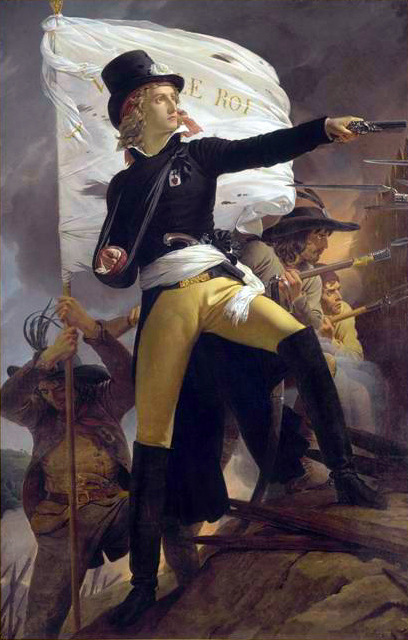
Henri de la Rochejaquelein, youngest general of the Royalist Vendéan insurrection during the French Revolutionary Wars
Henri de La Rochejacquelein at the Battle of Cholet in 1793 by Paul-Émile Boutigny
To learn more: https://en.wikipedia.org/wiki/War_in_the_Vend%C3%A9e
#Henri de la Rochejaquelein#Rochejaquelein#Paul-Émile Boutigny#Boutigny#art#art history#historical#historical art#fine art#art details#French Revolution#Vendee#Guerre de Vendée#Vendée#1793#18th century#18th century fashion#18th century history#19th century#battle#warrior#commander#general#tragic#rebellion#royalist#vendean#Vendéan insurrection#Vendéan#catholic
211 notes
·
View notes
Photo
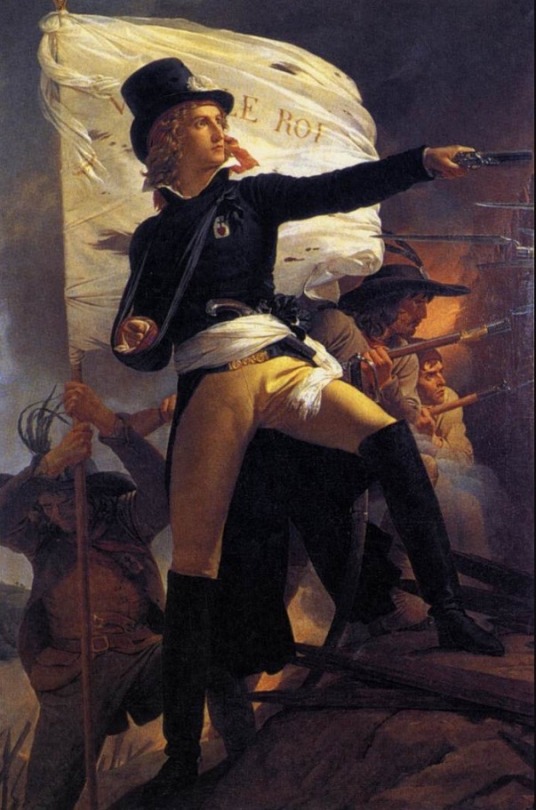
Pierre-Narcisse Guérin (1774-1833)
“Henri de La Rochejaquelein, leader of the revolt in the Vendée” (1817)
Oil on canvas
Located in the Musée d'art et d'histoire de Cholet, Cholet, France
Rochejaquelein (1772-1794), was the youngest general of the Royalist Vendéan insurrection, an uprising in the Vendée region of France, during the French Revolution.
#paintings#painting#artwork#pierre narcisse guérin#pierre narcisse guerin#oil on canvas#fine art#fine arts museum#cholet#france#art museum#european art#french history#french revolution#vendée#vendee#genre portrait#history painting#military art#1810s#early 1800s#early 19th century#male portrait#portrait of a man
290 notes
·
View notes